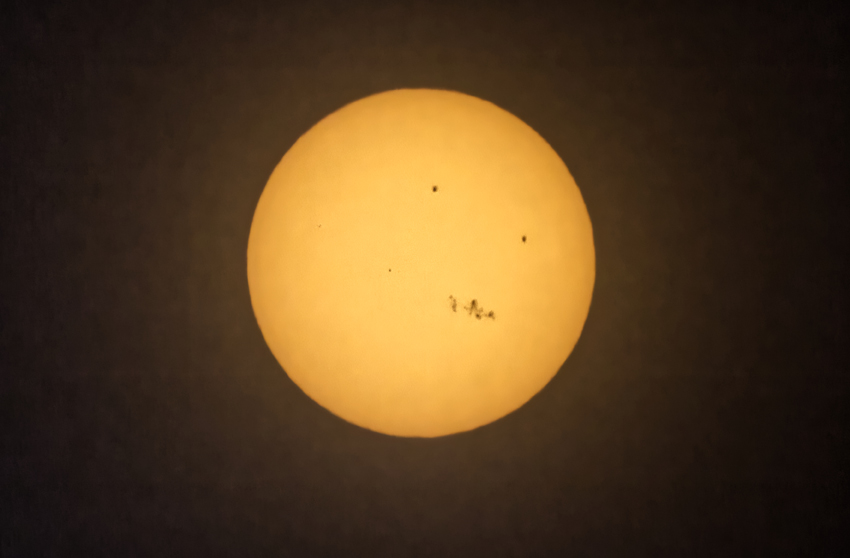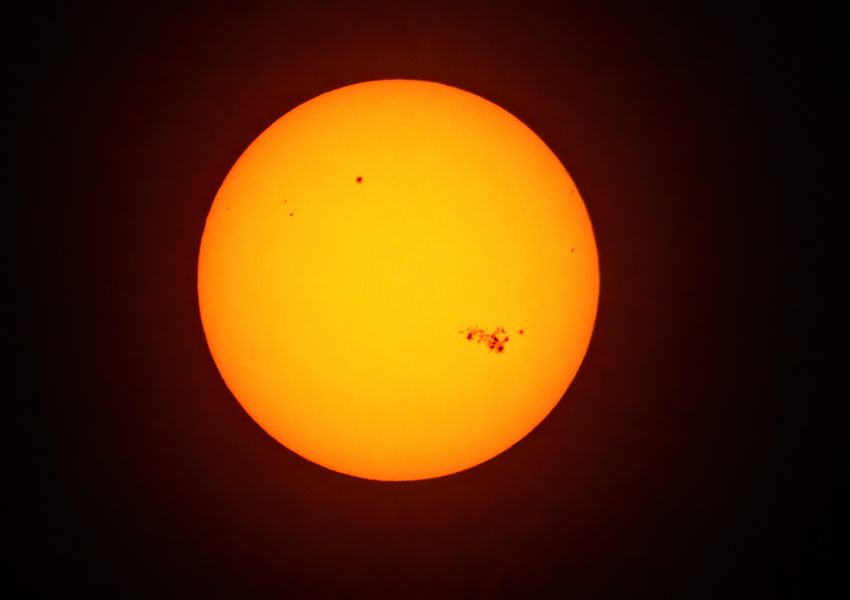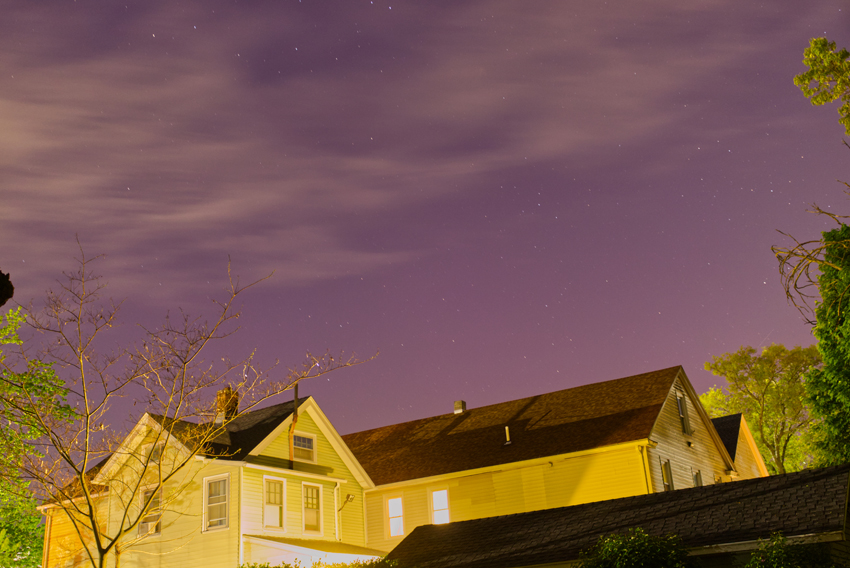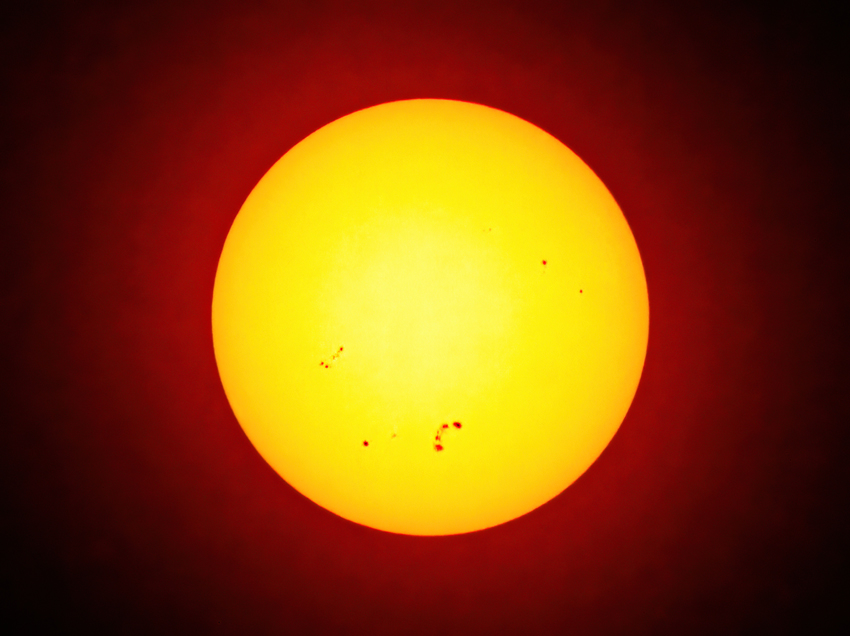Observing Reports
By Michael Amato
In the morning of March 25 at 3:15 AM, I observed the maximum coverage of the penumbral lunar eclipse. I was able to see the subtle shading on the bottom half of the Moon very easily with my 10X50 binoculars. However, I was just barely able to see the shading with my naked eye. It wasn’t much to see but I enjoyed it anyway.
Later that day, my brother Anthony took this image of the Sun while we observed the many sunspots on the Sun through our Uninstaller scope with a white light filter. We also used our Sunspotter Solar Scope. The sunspot group that sent all those CMEs our way is at the lower right on the Sun’s face. Also, during the evening a long train of Starlink satellites went across the sky. It reminded me of a long freight train going by. What a sight!

For many years, I’ve owned a primitive seismic wave detector that contains six balls on stems. One or more of these steel balls will drop off if they feel a tremor from an earthquake. In Eastern Connecticut, tremors known as “The Moodus Noises” have been occurring since the 1700s. Their cause is still a mystery and until March of this year, my detector has never detected them. Since seismology is considered to be a branch of radio astronomy, I was doubly excided when in early March a small tremor near East Hampton, CT knocked one of the balls off its stem without me feeling a thing. It was about two weeks later, still in March, that I heard a long creaking noise while I was lying in bed at 8:03 in the morning. I got up and checked my detector and sure enough, one of the steel balls fell off again. This was verified as a 2.1 magnitude earthquake and a lot of people felt it.
This now leads me to talk about the 4.8 magnitude earthquake that happened west of New York City in New Jersey. I was at my part-time job when it hit and it rocked Sports Haven where I work. All my brothers, friends and nieces felt it. My friend Rose, who lives in New Haven, was in the shower when a bottle flew off her table. I rushed home after work to check my earthquake detector and lo and behold, all six steel balls were sitting on their stems, seemingly unaffected by the earthquake. I can’t figure that one out because I expected to find two or three balls off their stems. Anyway, I will continue this interesting radio project to try to detect more tremors, especially the Moodus Noises.
On Thursday, May 9, I observed the Sun with its numerous sunspots with my Sunspotter Solar Scope. After I looked at the Sun, I called my brother about all the spots and he took out his digital camera with a long lens to photograph the Sun with all its spots. The attached photo was the result. This was the best sunspot grouping I ever viewed.

On Friday night, May 10, my brother Anthony imaged the aurora at about 11:15 pm, while he watched it from his place. This aurora was caused by coronal mass ejections from the huge sunspot in the picture above. I was watching it from my condo and we were in touch with each other on our phones. To me, the aurora was waxing and waning throughout the 45 minutes I was observing it. It looked pale green to me but my phone image showed it to be pink. The crescent Moon was still out and I was also able to see plenty of earthshine, even at that hour. Earthshine and aurora, WOW!

On May 28, I observed the nice open cluster IC 4665 in Ophiuchus with my 5.1″ short tube Newtonian Richfield Telescope. This cluster filled my scope with many stars, and it sort of resembled a fainter version of M44, the Beehive Cluster. After I viewed IC 4665, I then went online to see how other people saw this cluster. A few of the observers did say it reminded them of a fainter version of M44 while other observers never mentioned a likeness between both clusters. I guess all of us observers see the same thing differently and that’s what makes astronomy so great.
On June 16, while I was observing the Sun with my Sunspotter Solar Scope, I noticed the Sun was full of sunspots. I called my brother Anthony about it and he took this image of the Sun with his digital camera and a white light solar filter. This has been a great year of solar viewing.

